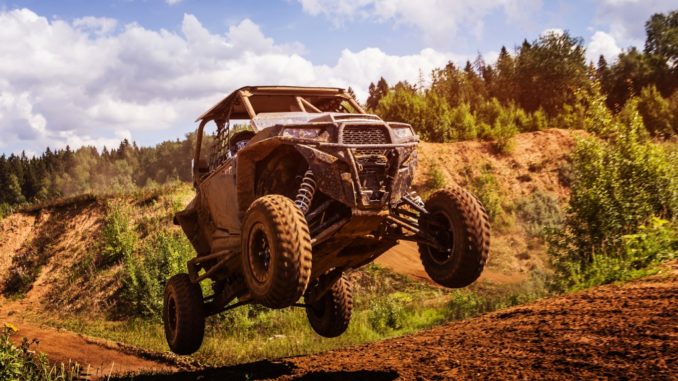
 Utility terrain vehicles are one of the most useful modes of transport in wilderness areas. Riding these vehicles safely requires an understanding of the nuances of their operation. Riders of these vehicles must also take the necessary preparations for a secure journey.
Utility terrain vehicles are one of the most useful modes of transport in wilderness areas. Riding these vehicles safely requires an understanding of the nuances of their operation. Riders of these vehicles must also take the necessary preparations for a secure journey.
In general, a Utility Terrain Vehicle (UTV) offers better stability and roll-over protection than an all-terrain vehicle (ATV). Its size, weight, and clearance make it less prone to being knocked over, and as a result, they also come with a much smoother ride for its passengers. The driver of a UTV does not need to adjust their bodies to maintain balance like they would in an ATV.
In addition, UTVs are, as their name suggests, capable of hauling large weights, often more than what an ATV can carry without a trailer. This makes them ideal workhorses for outdoor enthusiasts who need to transport heavy loads (such as hunting or angling equipment, bagged game and fish, and survival gear) across road-less terrain. Brands like Argo have hunting transport UTV models that are amphibious and can make quick work of shallow river crossings.
In general, a UTV is safer than an ATV due to its more closed design. Here are a few safety considerations to make when driving a UTV.
A Matter of Maneuverability
One advantage that ATVs have, meanwhile, is in maneuverability. Because they are designed for entertainment, they are designed to handle the twists and turns associated with racing. The smaller size of ATVs coupled with their nimbler controls, also makes them more navigable in cramped quarters. They can turn with relative ease at high speeds.
Meanwhile, UTVs have a steering system that heavily resembles those of road vehicles. Although the system is more intuitive than that of an ATV, it responds differently from that of cars. Drivers should resist the temptation to take off as though they were riding a car off the road; they should instead take time to get acquainted with the nuances of the UTV’s steering mechanisms before doing anything complex.
Customization allows UTV owners to improve maneuverability through adjustments. Some options, however, lead to better performance than others. Wheel size, for instance, should be as close the UTV’s original wheels as possible. Suspension settings, meanwhile, are quite easily one of the most inexpensive ways to improve a UTV’s performance. Drivers can see a remarkable difference in
As a general rule, the UTV’s relative lack of maneuverability means that drivers should travel within a moderate speed at most to ensure that they have sufficient time to spot and slowly avoid obstacles. There are situations where this can change, however.
Speed and Terrain
How fast a UTV should be going is heavily dependent on the state of the ground it is travelling in.
Mud is an ever-present danger for many outdoor enthusiasts, and in some seasons treacherous muddy terrain is almost unavoidable. When drivers find themselves in a muddy situation, speed could be their greatest ally. Apply sufficient speed onto the UTV to ensure it clears the mud and to keep it from getting bogged down.
What works in muddy ground does not apply elsewhere, however. Traveling at fast speeds on the snow or sand on a UTV is ill-advised. In these situations, slow and steady is the way.
Prioritize Safety

Both passengers and drivers should follow proper safety protocols when riding on a UTV. Besides wearing a seatbelt at all times, they should also wear the appropriate safety gear—helmets and goggles. A UTV should only be operated when the driver is sober and well-rested.
One of the key advantages of UTVs is its immense carrying capacity. Among the things that should be packed along with a UTV are emergency supplies, spare parts and tires, towing chain, and a toolbox. Passengers and drivers alike should have with them a medical emergency form and pencil.
Visibility can often be poor when riding off-road. When traveling in a UTV, drivers should have at least one companion with them to serve as their spotter. The spotter must be alert and provide real-time feedback on any obstacles they may encounter. It is also recommended that UTV drivers should travel in groups and stay close.
